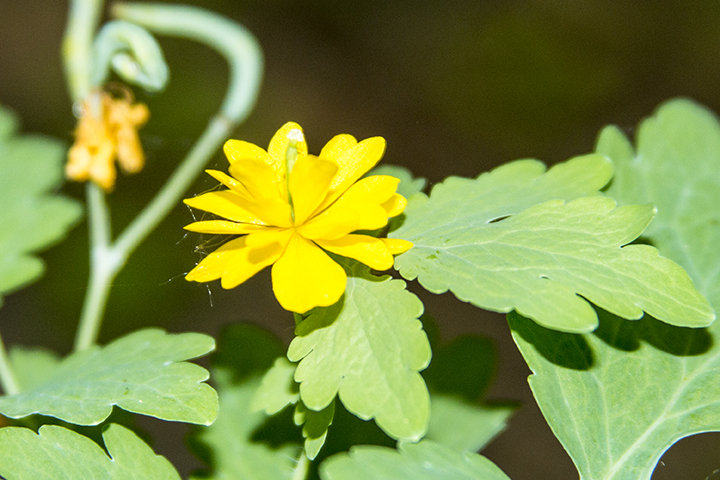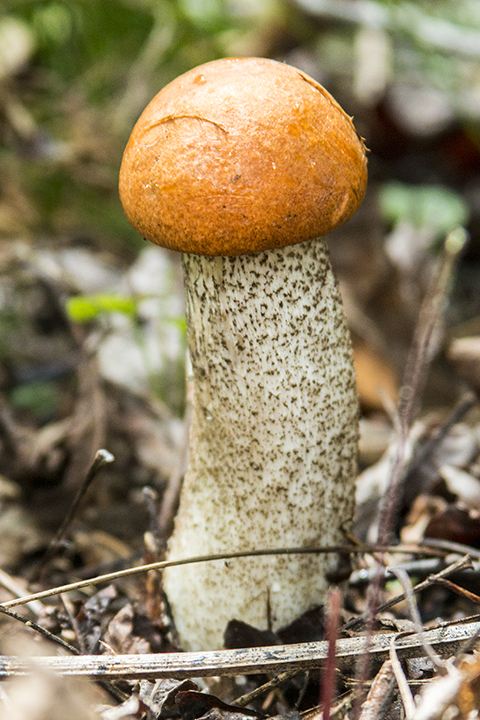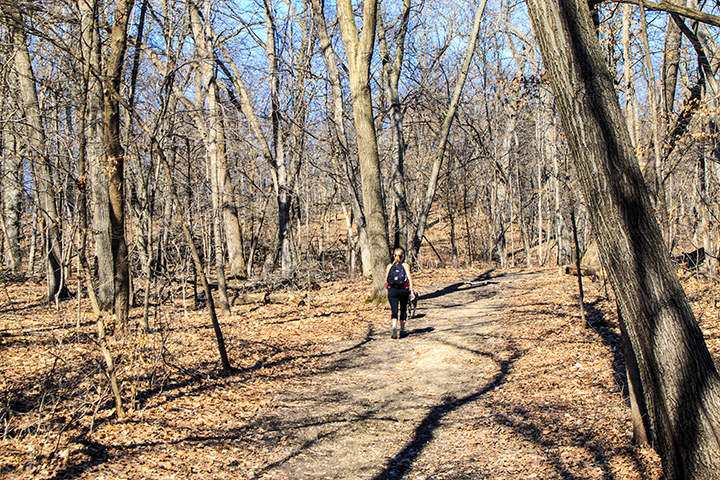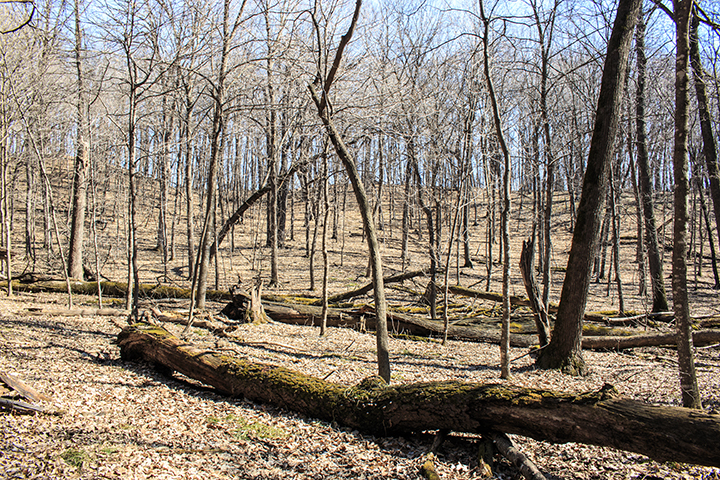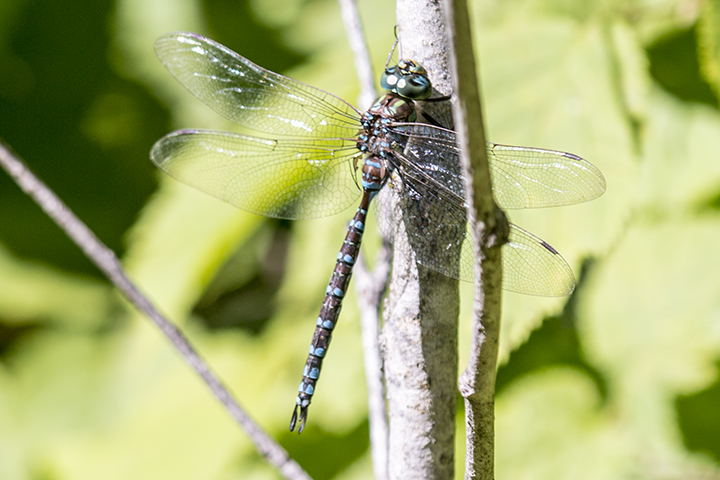Celandine (Chelidonium majus) is native to Europe, Asia, and North Africa. It was introduced and cultivated in eastern North America as an ornamental. It occasionally escapes cultivation and is now well established in moist woodlands from Maine to Ohio south to Virginia. It is uncommon in Minnesota.
Celandine is found in full sun to light shade in moderately moist woodlands, thickets, hedge rows, roadsides, railroads, and waste places. It produces small clusters of bright yellow, 4-petaled flowers from May to August. There is a double-flowered form of this plant that produces flowers with 12 to 24 petals each. The sap is bright yellow or yellowish-orange and toxic. It is a skin irritant and has been used medicinally to treat warts.
Celandine is easily identified by its leafy stems with 5- to 9-lobed leaves; bright yellow, 4-petaled flowers; and ascending, slender, hairless seed capsules. There are no similar species in Minnesota.

